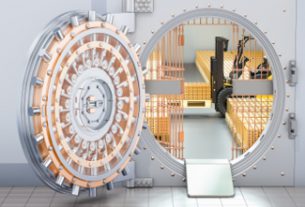One thing that’s almost universally true of the financial media is that they are ignorant of economics. Read just about any financial commentator and you’ll find articles chock full of bad economics and debunked fallacies. Whether it’s the “benefit” of higher government spending contributing to GDP growth, the necessity of the Fed to stimulate demand, or the broken window fallacy in the aftermath of natural disasters, you can be almost assured that whatever you’re reading is full of errors. And that naturally also applies when commentators start to expound on economic history.
While many Americans understand that the financial crisis was caused by the Federal Reserve’s monetary policy that created the housing bubble, many financial commentators don’t. Whether it’s out of ignorance or whether they have an ideological ax to grind, you’ll see a lot of blame for the crisis placed on “deregulation” of the financial sector or on risky lending by banks. Never mind that the banking sector remains one of the most highly regulated in the country, or indeed the world, or that risky lending was only possible because of the massive amount of money the Federal Reserve was pumping into the financial system.
And so despite the trillions of dollars of new money that the Fed has created since the financial crisis, you can rest assured that the next crisis will not be blamed on the Fed either. The Fed itself, of course, likes to blame market actors for the creation of bubbles, thinking of them as a sort of mass psychosis that has nothing at all to do with the Fed’s monetary creation. And of course the recent pressing issue of a looming escalation of a trade war with China will undoubtedly get some blame too. But while those factors may get the blame, they aren’t the actual cause of a crisis.
American companies and households were never allowed to really recover from the last crisis. Rather than allowing businesses to deleverage themselves, households to pay down debt, and bad debts to be liquidated throughout the financial system, the Federal Reserve insisted on papering over the debt problem. Rather than allowing bad debts to get flushed out of the system, the Fed created more money and drove interest rates down to near zero, incentivizing further debt issuance. It’s no wonder now that American businesses and households are more indebted than they’ve ever been, with debt levels continuing to rise.
A trade war may help bring some of those issues of indebtedness to light and cause those indebted companies to start to fail, but it won’t be the cause of the next crisis itself. But that won’t mean the trade war won’t get the blame for the crisis. With so many critics of President Trump looking to pin the blame on him, it will be the trade war, or tax cuts, or some other policy of Trump’s that financial commentators will try to blame for the crisis – anything but the Fed.
But savvy investors who understand economics and monetary policy know that the Fed is behind the next crisis just as it has been behind every financial crisis over the past century. More importantly, they know that the next crisis is brewing and they can take the right steps now to protect themselves and their assets against a coming stock market crash. That includes investing in gold to hedge against inflation and market downturn. Because no matter what the pundits may say, it’s not a trade war or anything else President Trump could do that will cause the next crisis, but rather a decade worth of the Federal Reserve’s unconventional monetary policy.
This article was originally posted on Goldco.




